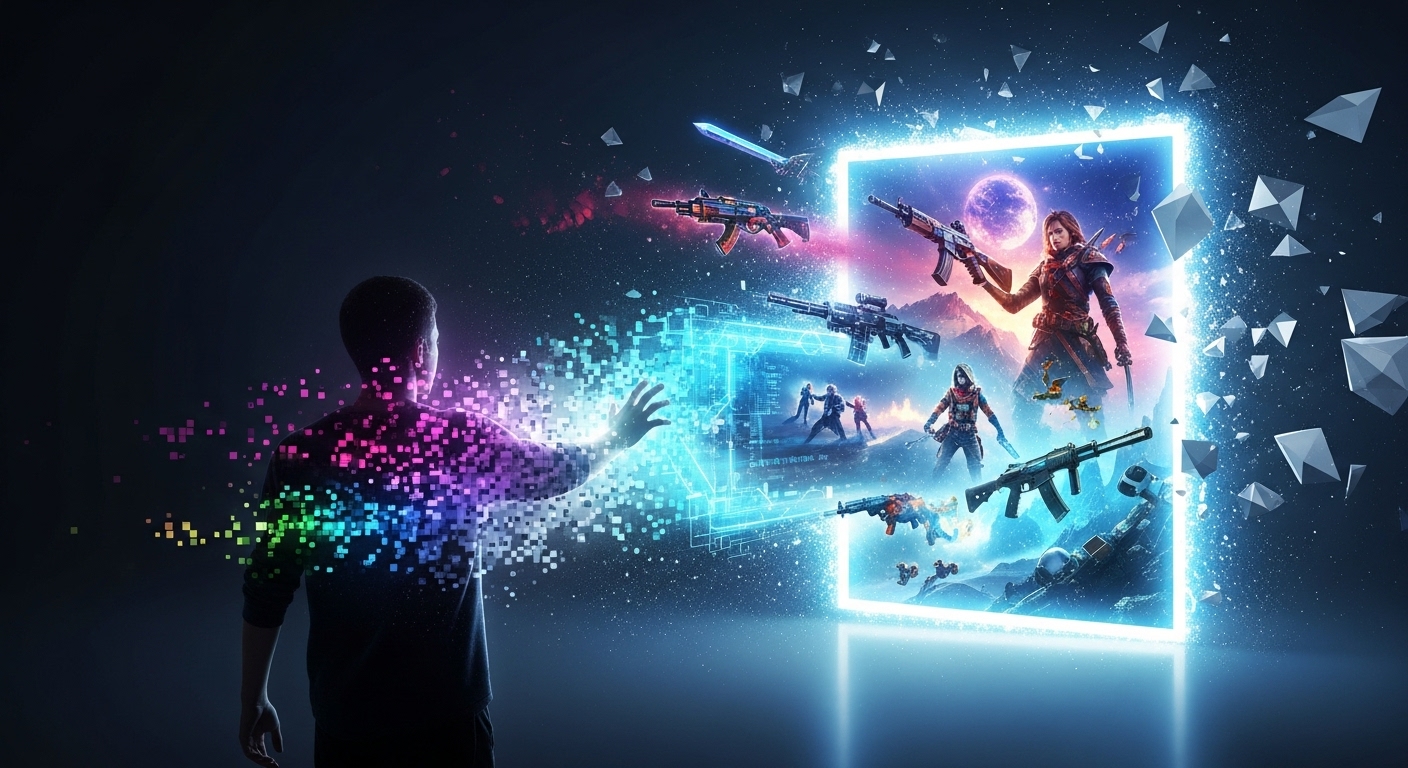Gaming has come a long way since its humble beginnings. Once a pastime reserved for niche communities, it has evolved into a global cultural phenomenon. With technological advancements and a surge in creativity, the gaming industry continues to redefine entertainment, art, and even social interaction. But how did it all begin, and where is it headed? Let’s take a deep dive into the evolution of gaming, from its origins to the immersive experiences of today.
The Early Days: From Pong to Pixelated Adventures
In the late 1970s, the first home video game consoles made their appearance, bringing gaming out of arcades and into living rooms. Games like Pong (1972), Space Invaders (1978), and Pac-Man (1980) introduced the world to basic gameplay mechanics, setting the stage for what was to come. At this point, games were simple—blocky visuals and straightforward gameplay were all that was needed to captivate players.
For many early gamers, the appeal was in the challenge. With limited processing power, developers had to create games that were both fun and simple enough to run on the available hardware. These early gaming experiences sparked a love for interactive entertainment that would fuel the industry’s explosive growth in the years to come.
The Rise of 3D Graphics and Complex Narratives
The 1990s marked a pivotal era in gaming. The introduction of 3D graphics brought a level of realism and immersion that had never been seen before. Games like Super Mario 64 and The Legend of Zelda: Ocarina of Time revolutionized how players interacted with virtual worlds. Instead of just pressing a few buttons to navigate a flat 2D screen, gamers could now explore vast, three-dimensional landscapes and engage with a story in new, more immersive ways.
This shift was also reflected in the development of gaming consoles. The Sony PlayStation, released in 1994, became the defining system of this era, bringing powerful 3D graphics to the masses. Meanwhile, PC gaming also saw exponential growth, with games like Half-Life and Starcraft capturing the imagination of a dedicated fanbase.
During this time, the gaming industry began to embrace complex narratives, allowing players to experience rich stories that rivaled those found in books or movies. Titles like Final Fantasy VII and Metal Gear Solid presented gamers with intricate plots, deep character development, and emotional stakes, proving that video games were no longer just mindless entertainment—they could be an art form.
The Age of Online Play: Connecting Gamers Globally
The early 2000s brought the internet into the gaming experience in a big way. Multiplayer gaming exploded as players were now able to connect with others around the world. Halo 2 (2004) and World of Warcraft (2004) ushered in an era of online gaming that would forever change how we think about community in gaming. No longer were games limited to the confines of a single player experience or a local group of friends. The digital world now allowed for global competition, cooperation, and connection.
Online gaming also introduced the concept of live services, where games were continuously updated and supported by developers long after their initial release. This shift gave birth to a new model of “games as a service,” with ongoing content updates, seasons, and events becoming the norm. Fortnite, League of Legends, and Apex Legends are perfect examples of how this model has reshaped the gaming industry.
Virtual Reality and the Future of Immersion
As technology continues to advance, the concept of immersion in gaming has taken on an entirely new meaning. Virtual reality (VR) gaming, which was once considered a pipe dream, is now a reality. With VR headsets like the Oculus Rift and HTC Vive, players can step into fully realized worlds and interact with them in ways that were once unimaginable.
Games like Beat Saber and Half-Life: Alyx have already demonstrated the potential of VR to transport players into entirely new realms. The sense of presence, where players feel as though they are actually part of the world they’re exploring, adds a layer of depth and engagement that traditional gaming platforms can’t match.
Looking further into the future, the potential for augmented reality (AR) and mixed reality (MR) to transform gaming is also exciting. These technologies can blend the digital world with the real world, creating experiences that transcend the boundaries of screen-based play.
Gaming and Cultural Impact: More Than Just Entertainment
What was once seen as a niche hobby is now a dominant force in global culture. The gaming community has expanded far beyond the confines of traditional gaming consoles and PCs. With mobile gaming, live streaming platforms like Twitch, and YouTube gaming, a whole new generation of gamers has emerged. It’s not just about playing games anymore; it’s about sharing experiences, building communities, and even making a career out of gaming.
The rise of esports has also elevated gaming to new heights. Professional leagues, tournaments, and massive prize pools have turned competitive gaming into a mainstream spectacle. Games like League of Legends, Dota 2, and Overwatch attract millions of viewers, creating a new form of entertainment that rivals traditional sports.
Moreover, video games have become a powerful storytelling medium. Games like The Last of Us and Red Dead Redemption 2 offer narratives that explore deep themes like loss, redemption, and moral ambiguity. These stories often resonate on a personal level with players, highlighting the emotional and intellectual depth that video games can achieve.
The Future of Gaming: Artificial Intelligence and Beyond
As we look to the future, the role of artificial intelligence (AI) in gaming is poised to become a game-changer. AI can create smarter, more dynamic opponents, adaptive gameplay, and personalized experiences. Imagine a game where the world reacts to your every action in real-time, or where NPCs (non-playable characters) have their own goals and motivations that affect the story. The possibilities are endless.
Another exciting development on the horizon is cloud gaming. With platforms like Google Stadia and Xbox Cloud Gaming, the ability to play AAA games without the need for expensive hardware is within reach. As internet speeds continue to improve, the dream of playing high-quality games on any device, anywhere, may soon become a reality for even the most casual gamers.
Conclusion: A Never-Ending Journey
Gaming is an ever-evolving medium that continues to surprise, challenge, and inspire. From its pixelated roots to its current state of virtual reality and online worlds, gaming has become an integral part of our lives and culture. As technology continues to advance, the boundaries of what’s possible in gaming will only expand, leading us into a future where the line between reality and virtual worlds continues to blur.
Whether you’re a casual gamer, a hardcore esports competitor, or someone who simply enjoys exploring new virtual worlds, one thing is certain: gaming is no longer just a pastime. It’s a global language, a form of art, and a space for limitless creativity. The evolution of gaming is far from over, and the journey ahead promises to be just as thrilling as the experiences we’ve already had.



